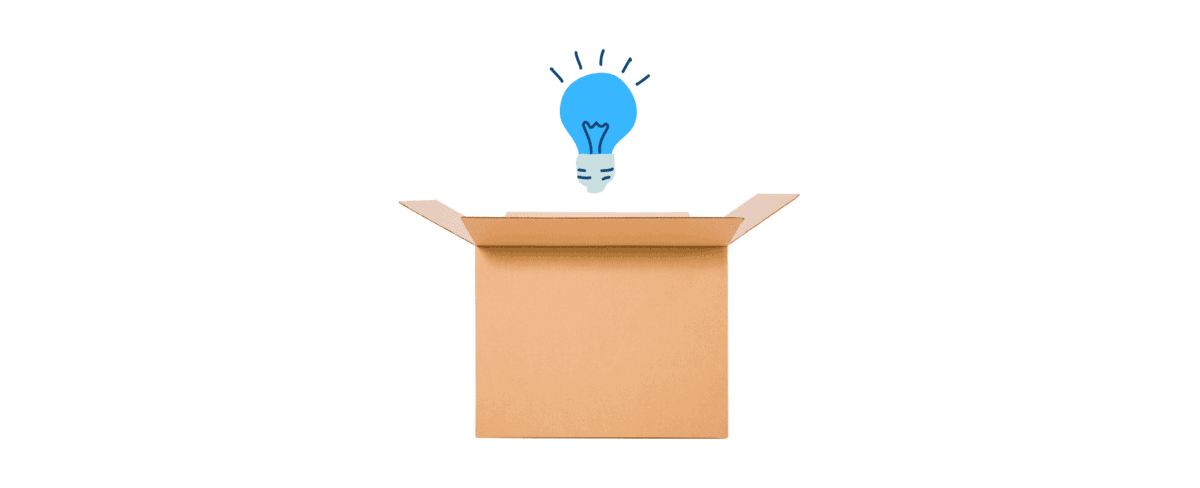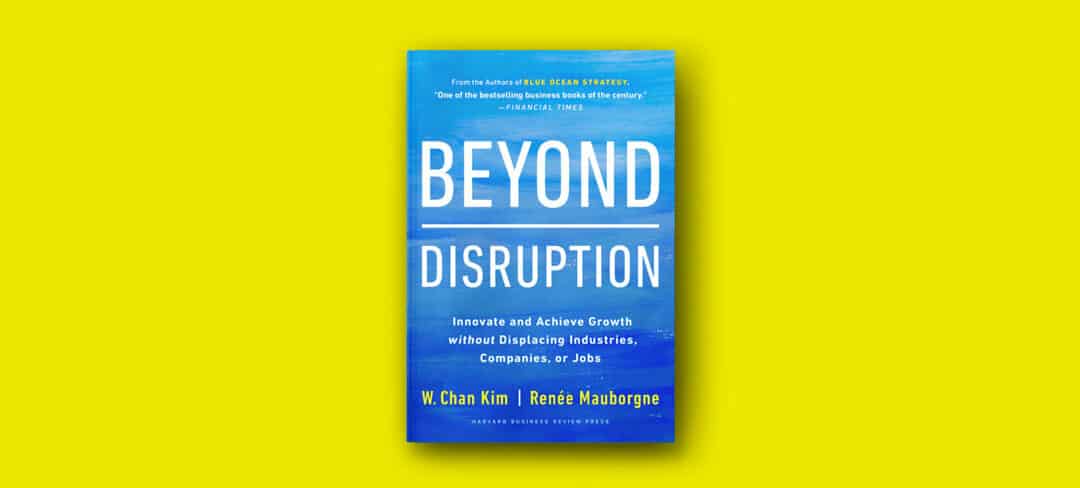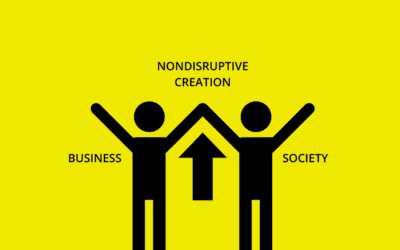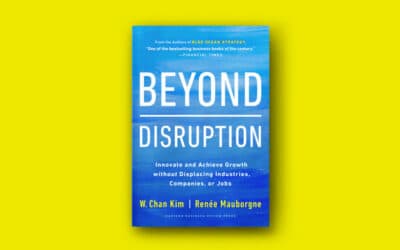Have you ever been told to think outside the box? If you’re a leader, you’ve probably asked your team for some out-of-the-box thinking to solve a particularly challenging problem. You’ve certainly heard the phrase in some context. Thinking outside the box might sound like a cliché but it contains a large element of truth. To think outside the box means tackling problems in novel ways. It calls for innovative thinking and new approaches to old problems. In short, to think outside the box is to pursue solutions that may not appear obvious through the lens of conventional thinking.
That’s all very well, but how exactly do we think out of the box?
Blue ocean strategy offers a powerful methodology to tackle this issue with its systematic approach and proven tools that offer creative solutions to seemingly intractable problems. As you will discover, having a blue ocean mindset and thinking outside of the box are essentially the same thing. Blue ocean thinking can be thought of as a synonym for out-of-the-box thinking.
Are you stuck inside the box, i.e., stuck in the old ways of doing things? Blue ocean strategy offers many ways of how to think outside the box, or as we like to say, how to think like a blue ocean strategist.
In this article, we’ll look at what it means to think like a blue ocean strategist. We’ll cover some of the tools and frameworks that can help you think out of the box in a systematic way. And we’ll look at examples of organizations that have used innovative approaches to solve problems.
But let’s first explore what it means to think out of the box.
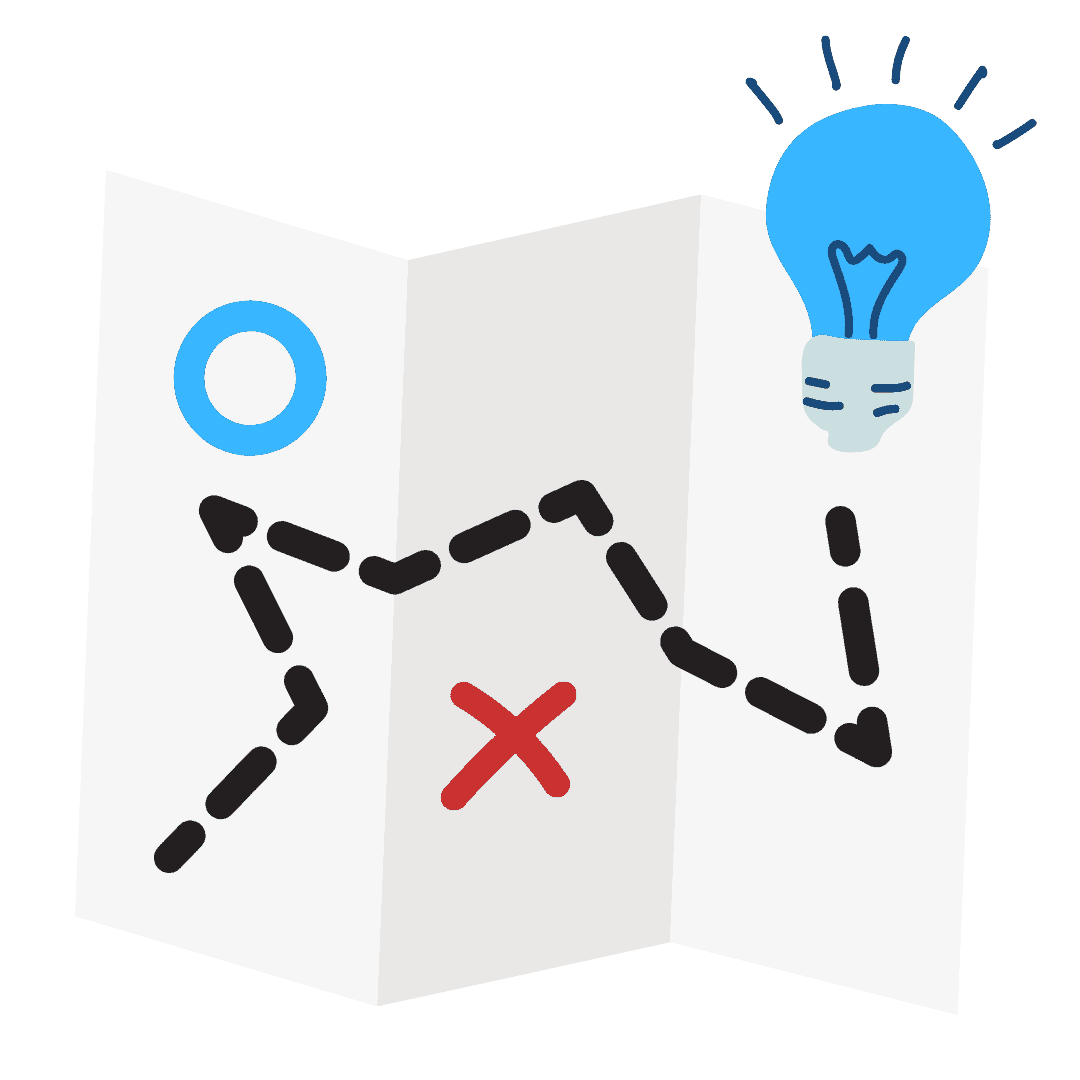
What does it mean to think out of the box?
Thinking outside the box can be a synonym for blue ocean thinking. Likewise, a person who thinks outside the box can be called a blue ocean thinker or strategist.
Blue ocean strategists don’t get taken in by what everyone else takes for granted. They embrace a perspective that helps them challenge long-held assumptions and recognize the artificial boundaries we unknowingly impose upon ourselves.
Adopting the perspective of a blue ocean strategist shifts your thinking from constraints to new opportunities. From the market-competing logic that dominates the way many business executives and entrepreneurs think, to out-of-the-box thinking that opens up blue oceans of new opportunities.
Are you an out-of-the-box thinker? Are you a blue ocean strategist?
Whether you’re a leader or manager who wants to learn how to think outside the box to create new opportunities for a company, or you are simply looking for unconventional ways of thinking to create new opportunities for yourself, the following questions will challenge your existing approach.
When it comes to out-of-the-box thinking in business, ask yourself four questions:
1. Do you take industry conditions as given or do you reshape them in your favor?
If you think outside the box, you won’t take industry practices as a given. You’ll see clearly what others do not, namely that individual firms created industry conditions, not the other way round. Industry boundaries are not fixed. As a blue ocean thinker, you rise above the challenges and reshape the business environment in your favor. Don’t let existing industry logic shape your strategy. Instead, when you think outside the box like a blue ocean strategist, your strategy shapes the structure.
2. Do you try to beat the competition or make the competition irrelevant?
If you no longer accept industry conditions as given, then why let the competition set your strategy? To be a blue ocean thinker means looking beyond the competition rather than benchmarking it and trying to improve on its best practices. The more you look to the competition, the more your strategy will look like your competitors. Instead, stop looking at what your competitors are doing and start looking at what buyers really value.
3. Do you focus on creating and capturing new demand or do you focus on fighting over existing customers?
As a blue ocean strategist, you don’t just focus on satisfying existing customers. You’ll recognize that competing in red oceans is a zero-sum game. A market-competing strategy divides existing wealth between rival companies. As competition increases, prospects for profit and growth decline. But when you think outside the box and look beyond existing customers, you’ll see that uncontested market space, rather than a shrinking profit pool, is where opportunities for growth reside. Sometimes, what you need is a blue ocean perspective and a bit of out-of-the-box thinking to understand how your product or service can deliver unprecedented value and bring in new customers for your product or offer.
4. Do you take an either-or approach to differentiation and cost?
Most people assume that to achieve differentiation, they need to spend more. They accept as given that lowering costs means compromising on the distinctive value on offer. But you think differently. As someone who thinks outside of the box, you pursue differentiation and low cost simultaneously. A blue ocean strategist doesn’t choose between pursuing differentiation and low cost. If you truly have a blue ocean mindset, you do both.
To learn more about how a blue ocean mindset can uncover hidden opportunities amid the Covid-era economic crisis, read Chan Kim & Renée Mauborgne’s article: How to Be Blue Ocean Strategist in a Post-pandemic World.
Benefits of thinking outside the box
There are many benefits to thinking out of the box. As many powerful blue ocean strategy examples show, there is huge value in challenging the conventional thought process, breaking the value-cost trade-off, and coming up with innovative solutions to existing problems. Take Apple, for example, a company whose ethos and strategy are to ‘think different’. In the blog, Think Different: Apple Blue Ocean Formula for Success, we go deeper into the strategic thinking behind the world’s most innovative company.
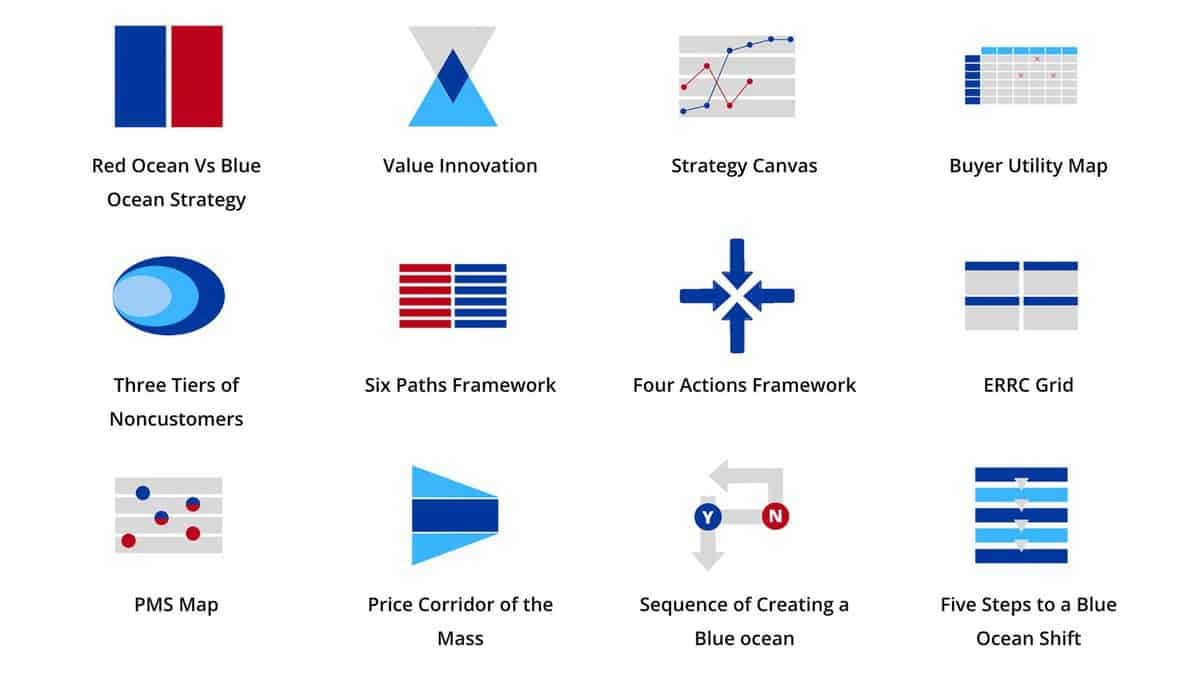
How to think outside the box systematically with blue ocean tools and frameworks
Chan Kim and Renée Mauborgne have created a powerful and comprehensive set of analytic tools and frameworks to help you think outside the box systematically and generate new ideas regularly.
Let’s take a brief look at how you can use two of the tools to unlock a blue ocean.
Turn pain points into opportunities – The Buyer Utility Map
Pain points are aspects of a business, product, or service that buyers, knowingly or unknowingly, are forced to put up with or find so inconvenient that they turn to alternatives.
But you, as an out-of-the-box thinker, don’t follow this conventional thinking. You see constraints and pain points as opportunities for growth.
Imagine if you could identify these pain points, get a clear picture of how they limit the appeal and size of your industry, and then flipped these pain points into opportunities to create value.
The buyer utility map, one of the many blue ocean tools that can help you think out of the box, gives you insights into how your industry limits its demand by creating pain points for current and potential buyers. The map shows you where opportunities to create blue oceans of uncontested market space exist and how to create them.
As we will see in the case below, Groupe SEB used the buyer utility map to think outside the box with extraordinary results.
Create new demand – The Three Tiers of Noncustomers
As we saw earlier, most people naturally think customers should come first. But there’s another way to think about it, one that’s the very definition of out-of-the-box thinking.
Rather than customers first, how about noncustomers first? These are buyers that don’t currently buy into your industry, product, or service. Why compete for existing customers of your industry when you can look beyond to a vast ocean of noncustomers who could benefit from your service or product but don’t because, for example, they have never considered it as an option?
So how can you identify your noncustomers? And how can you transform noncustomers into new customers? Chan Kim & Renée Mauborgne’s three tiers of noncustomers will help you achieve both.
Read our article on noncustomers to learn how the tool can help you identify demand that exists beyond your industry.
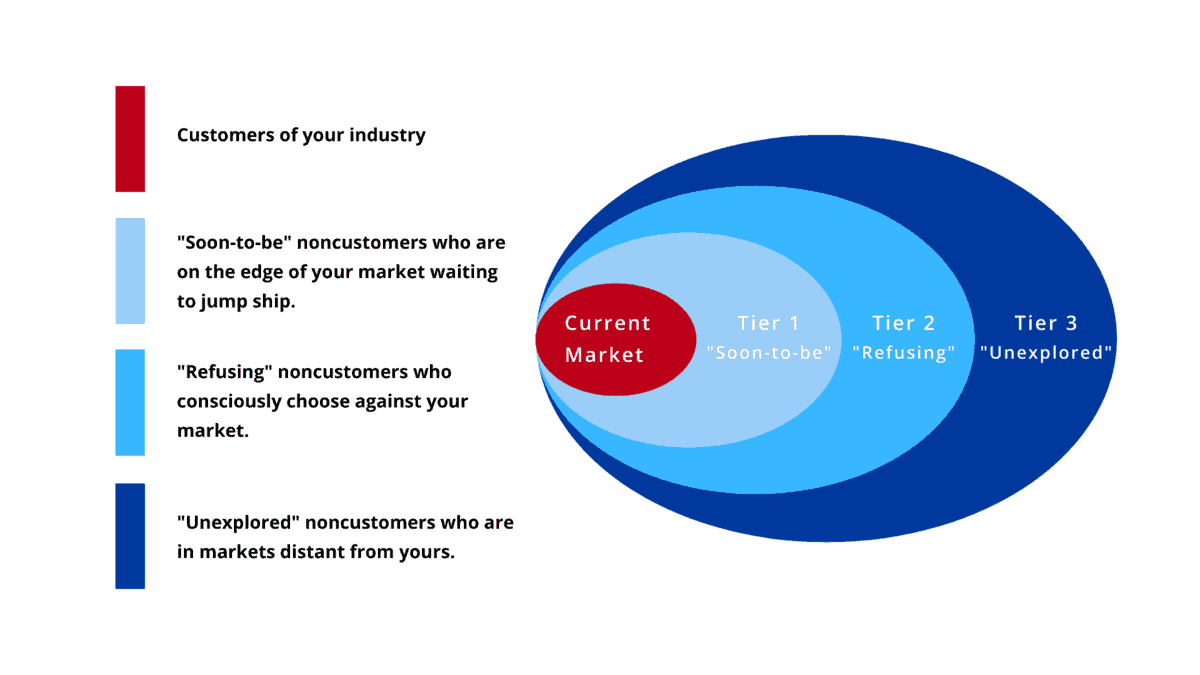
© Chan Kim and Renée Mauborgne. All rights reserved.
Examples of thinking outside the box in business and life
How to think outside the box in business
Let’s take a brief look at an example of a French multinational, Groupe SEB, who flipped industry logic on its head and created blue oceans.
Groupe SEB – French fries without oil
The Actify French-fry maker is a classic example of thinking outside the box. Groupe SEB’s French-fry makers were struggling to stand apart in a market that was shrinking 10% a year.
Using the buyer utility map, Groupe SEB discovered two facts that the industry had accepted without question. The first was that, to make French fries, you had to fry them. The second was that frying required a lot of oil. These assumptions led the industry to overlook a host of problems: cooking oil was expensive, and dangerous when hot. Cleaning it up and disposing of it was difficult. Using so much oil was also unhealthy and fattening.
The team at Groupe SEB challenged the accepted wisdom and redefined the problem. Rather than try to come up with the best-in-class fryer, Groupe SEB concentrated on how to make delicious, healthy fries without frying them in lots of oil.
The result was ActiFry, a new type of French-fry maker that used only one tablespoon of oil to make two pounds of fries, with roughly 40% fewer calories and 80% less fat.
Actifry is one of the cases analyzed in our Blue Ocean Online Course, along with many other companies from a range of industries. Check it out.
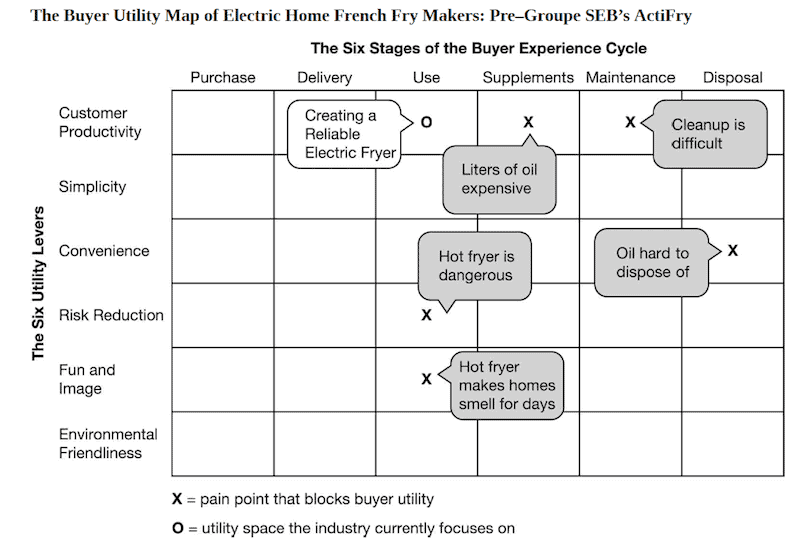
© Chan Kim & Renée Mauborgne, Blue Ocean Shift: Beyond Competing – Proven Steps to Inspire Confidence and Seize New Growth.
National Youth Orchestra of Iraq – conducting outside the box
With limited funds, a lack of professional musicians and a range of logistical barriers, setting up an orchestra in Iraq would sound like an impossible task for any conductor.
Paul MacAlindin is not just any conductor, however. He is also a blue ocean strategist and out-of-the-box thinker.
In 2008, when the National Youth Orchestra of Iraq was set up, Iraq didn’t have music schools. All the players were self-taught, and their instruments were of poor quality with no place or tools to maintain or fix them.
MacAlindin understood that the orchestra couldn’t simply copy the same strategy other orchestras used when trying to make a mark. It simply didn’t have the means, talent or historical reputation to do so.
“In essence, we had all the odds against us to be taken seriously. But we had a drive and determination that was beyond all the struggles. And ultimately the concepts of blue ocean strategy and shift showed us the way to overcome our challenges. Our competitors were Rolls Royces and we were a Mini. We knew that, if we wanted to make this work, we couldn’t just copy their strategy.”
MacAlindin and the National Youth Orchestra of Iraq used blue ocean frameworks to focus on the actions and values that would really make a difference while eliminating those that carried more cost than value.
MacAlindin’s out-of-the-box thinking saw the orchestra hold dozens of performances and achieve international fame, with Sky News calling it ‘The Bravest Orchestra in the World.
Watch the interview with Paul MacAlindin.
Exercise to help you think outside of the box
Here is a blank template of the buyer utility map. It will help you identify hidden pain points in your industry. Pain points represent a block to the utility buyers receive.
1. Put yourself in the shoes of buyers and imagine their total experience from purchase to disposal.
2. Ask yourself as you move from stage to stage – what is the biggest block to utility at each stage. For example, what is the biggest block to customer productivity in each of the buyer experience cycle stages? And what are the reasons for this block?
3. Fill in the buyer utility map. Put an X in each space where a pain point was revealed.
4. What does your completed buyer utility map reveal?
5. Could these pain points be limiting how your current customers use your product or service?
6. What if you could eliminate these blocks to utility?
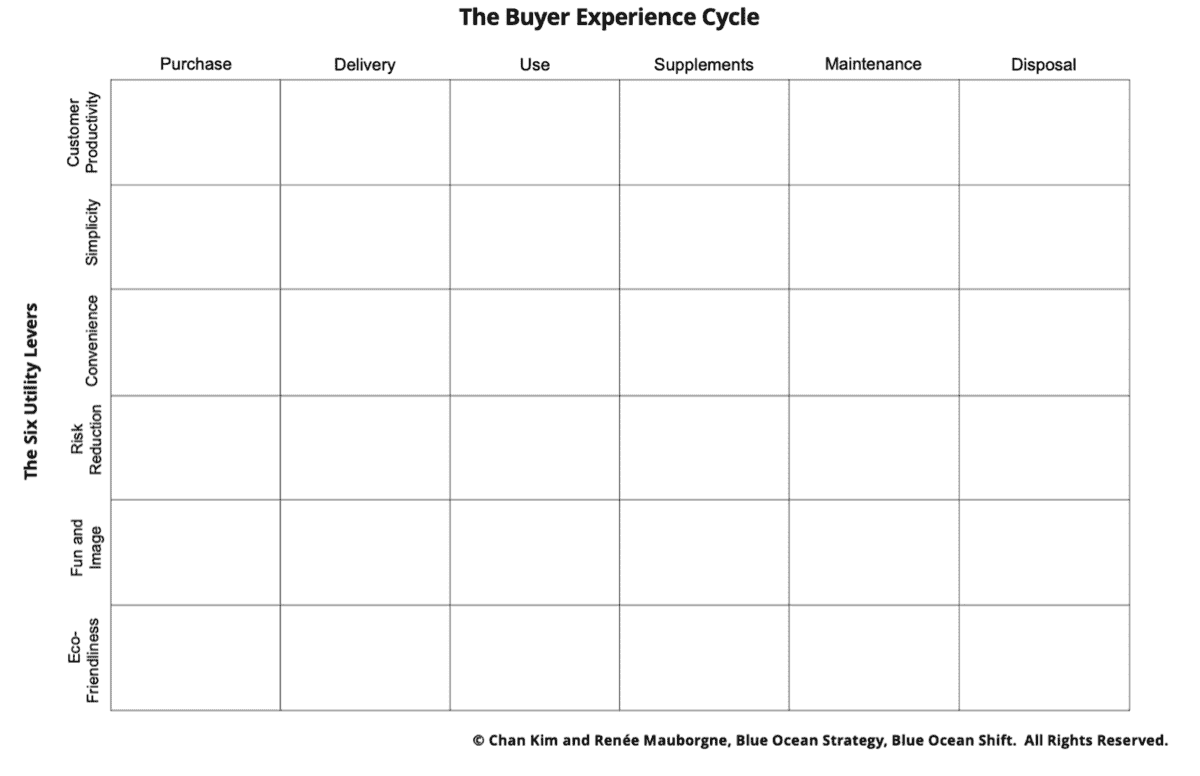
Our online course and its companion workbook detail step by step how to identify the pain points your industry might be imposing on buyers and shows you how you could turn these blocks to utility into opportunities to provide value to buyers.
Think out of the box with these books
Not surprisingly, when it comes to books that help you think outside the box, we recommend Blue Ocean Strategy and Blue Ocean Shift, by professors of strategy and world-renowned management thinkers Chan Kim and Renée Mauborgne.
Blue Ocean Strategy is one of the most iconic and impactful strategy books ever written. In the book, the authors analyze 150 strategic moves, spanning more than 100 years across 30 industries that challenge conventional ways of thinking, and show that lasting success comes not from battling competitors but from creating “blue oceans” — untapped new market spaces ripe for growth.
Blue Ocean Strategy presents a systematic approach to making the competition irrelevant by thinking in new, innovative ways. It outlines principles and tools any organization can use to think out of the box and create and capture their own blue oceans.
Blue Ocean Shift is the essential follow-up to Blue Ocean Strategy and the definitive guide to out-of-the-box thinking. In the book, the authors give concrete steps and a systematic process you can follow to create your own blue ocean.
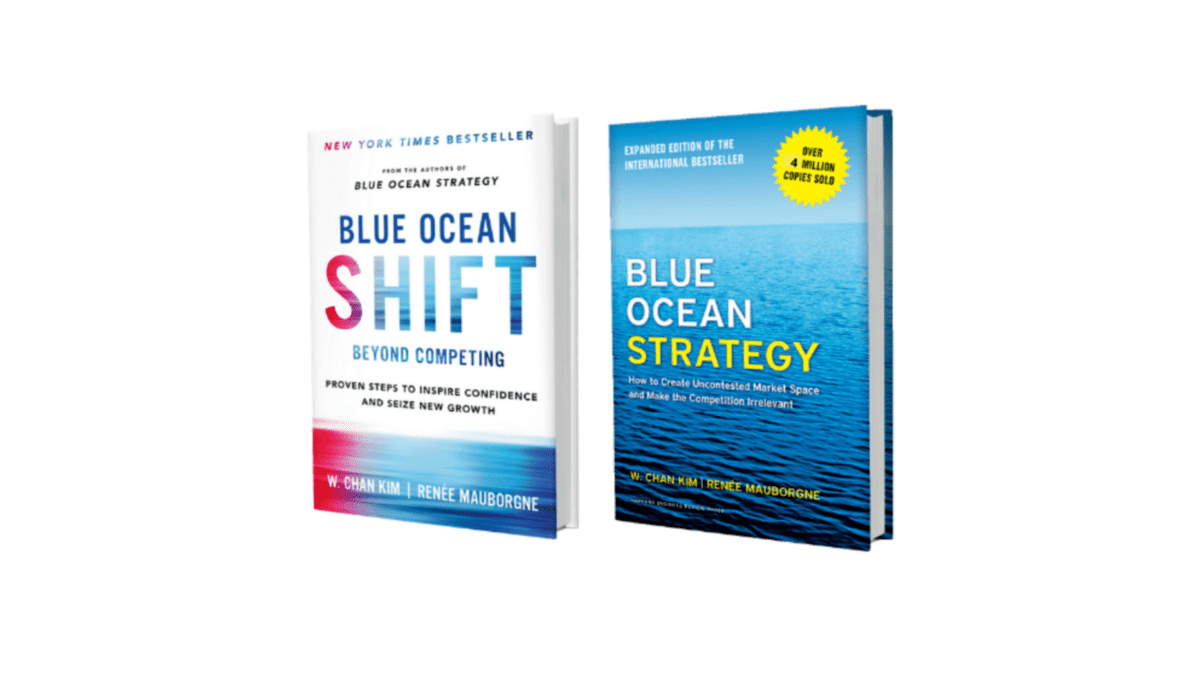
Quotes to inspire thinking out of the box
Are you ready to start thinking out of the box and get your business on a path to profitable growth? Here is a selection of quotes from the # 1 Management Thinkers in the World, Chan Kim and Renee Mauborgne, about out-of-the-box, blue ocean thinking. If you change the way you think, you will inevitably change the way you operate your business.
“Blue ocean strategy is not about finding a better or lower-cost solution to the existing problem of an industry. Instead, it is about redefining the problem itself.”
“The best way to beat the competition is to stop trying to beat the competition.”
“Pain points and boundaries are not constraints. They are blatant opportunities to change the playing field of strategy”
“Value innovators don’t assume that just because competitors are doing something they should follow suit and do it too. They pursue a quantum leap in value”
For more blue ocean inspiration, check out these inspiring business strategy and innovation quotes.
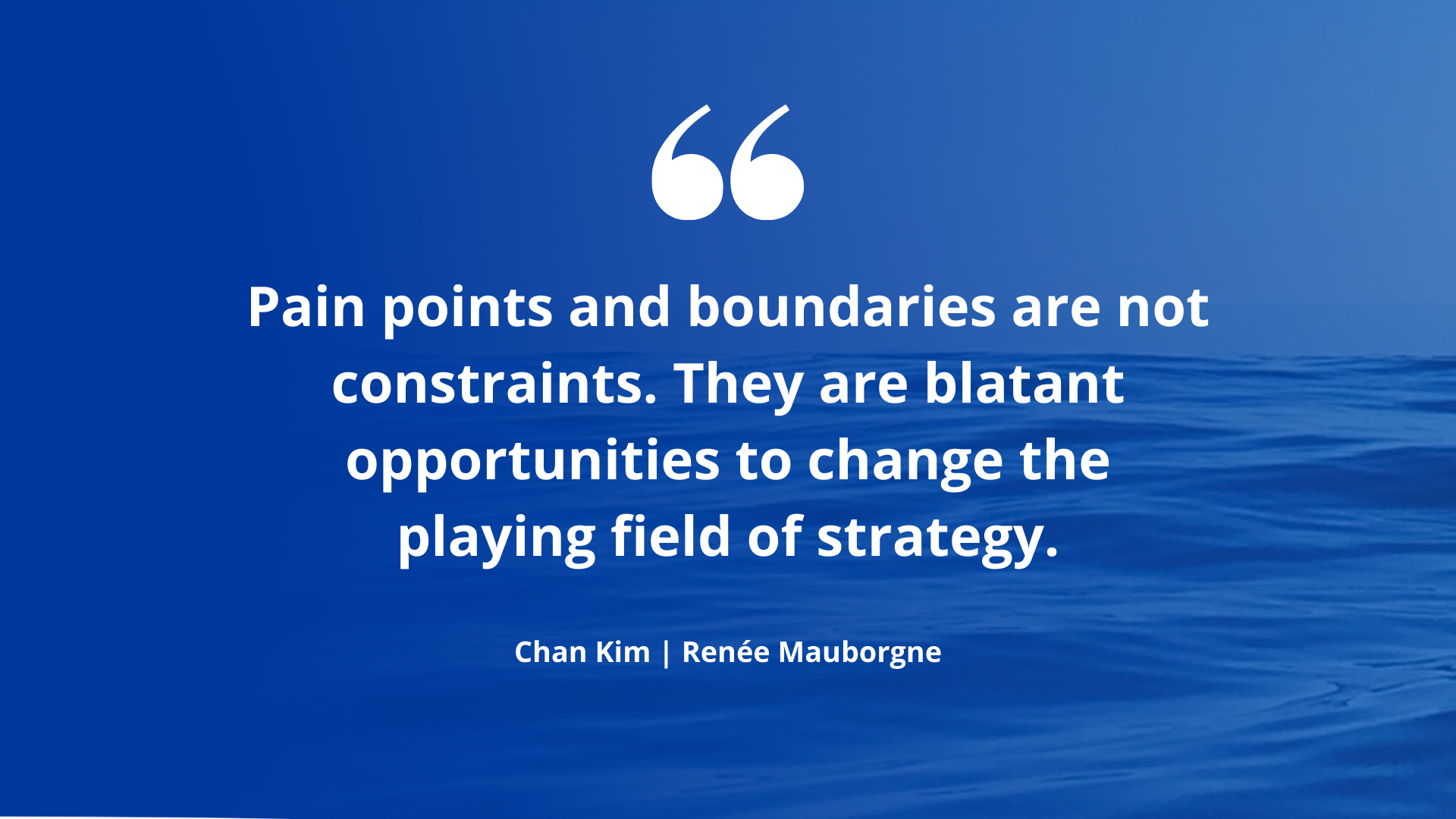
Out-of-the-box creative solutions are waiting to be applied
Problem-solving is a fundamental part of life. When we try to solve problems effectively, especially in business, it’s natural to ask questions like: How can I think outside the box and develop great ideas? How can I solve this problem in a new and innovative way? How can I develop out-of-the-box creative business solutions that will propel my company to new heights?
In this article, we have given you a blue ocean perspective on these questions, and our hope is that you will explore blue ocean thinking some more to help unlock opportunities in your business and life.
Are you an outside-the-box thinker? Do you want to learn how to become one?
To learn more about how blue ocean strategy can help you think out of the box, check out the Blue Ocean Sprint, our flagship online course that many business executives, managers, and entrepreneurs have turned to create their blue oceans of new market space.
